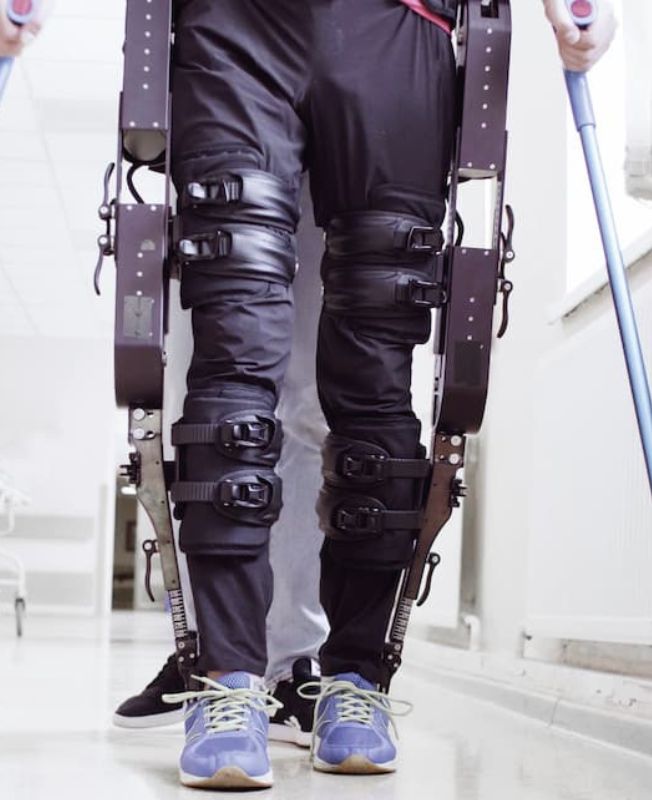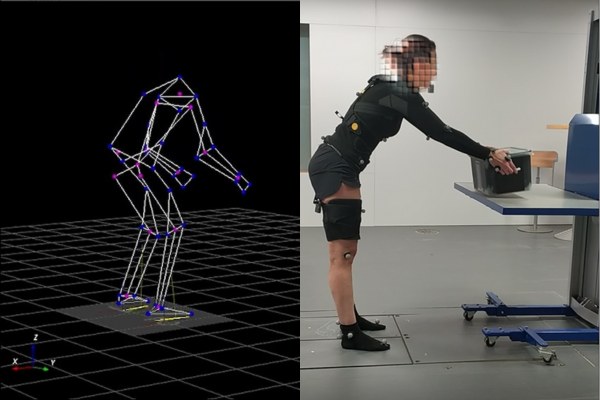EXOSKELETON TESTING LABORATORY
The Instituto de Biomecánica (IBV) is a leading center for the evaluation and validation of exoskeletons for rehabilitation, assistance, and occupational risk prevention. With a focus on safety, efficiency, and human-device interaction, our testing ensures that exoskeletons meet market demands and real user needs.
The development of these devices presents challenges not only in mechanical performance but also in their integration with the body’s natural movement. At IBV, we combine structural testing with advanced biomechanical studies to validate the design, strength, and functionality of exoskeletons prior to market launch.
In addition to providing precise and reproducible results, our laboratory offers strategic insights and technical recommendations, helping manufacturers optimize device performance and accelerate time to market.
TYPES OF EXOSKELETONS TESTED
Exoskeletons can be classified as either active or passive, depending on the use of electromechanical actuators. At IBV, we test both categories, tailoring our methodologies to the specific characteristics of each device.
- Active exoskeletons:
These systems incorporate motors, sensors, and control units that actively assist user movement. Their evaluation requires advanced testing of human-machine interaction, energy consumption, and biomechanical response accuracy. - Passive exoskeletons:
These devices do not rely on motorized systems but instead use springs, elastic elements, or rigid structures to redistribute loads. Validation focuses on physical effort reduction, user comfort, and material durability.
Beyond this classification, exoskeletons differ based on their specific application:
- Rehabilitation exoskeletons:
Designed to assist individuals with reduced mobility, these devices must ensure optimal biomechanical interaction to support safe and effective recovery. - Industrial exoskeletons:
Used in workplace settings to reduce muscle fatigue and prevent injury, these systems must offer durability, ergonomics, and ease of use. - Personal assistance exoskeletons:
Intended to improve daily mobility for people with disabilities, these require validation in terms of comfort, autonomy, and adaptability. - Military and high-performance exoskeletons:
Developed to enhance physical capabilities in demanding environments, their evaluation focuses on extreme durability, mobility, and stability under adverse conditions.
Each type of exoskeleton presents unique design and functional challenges.
At IBV, we adapt our testing protocols to ensure their safety and effectiveness in the intended context of use.


MECHANICAL AND BIOMECHANICAL TESTING FOR EXOSKELETONS
To ensure the safety and performance of exoskeletons, we carry out specific tests that assess both their structural integrity and their impact on the user. In our laboratory, each device is evaluated through a comprehensive approach that combines mechanical testing, biomechanical analysis, and functional validation in real-world settings.
- Mechanical strength and fatigue testing:
Evaluation of the exoskeleton’s structural durability under repetitive load conditions. - Load and weight distribution tests:
Analysis of the device’s impact on user posture, balance, and stability. - Biomechanical movement assessment:
Measurement of muscle effort, joint activation, and user kinematics during exoskeleton use. - Ergonomics and thermal comfort analysis:
Tests to ensure the device does not create pressure points or excessive heat buildup. - Cognitive load and perceived effort studies:
Evaluation of the exoskeleton’s effect on mental and physical fatigue across different usage scenarios. - Functional validation in real-world environments:
Testing in clinical, industrial, and occupational settings to verify the device’s efficiency in its intended application.
Each of these tests helps optimize exoskeleton design, ensuring safe, effective, and user-accepted implementation.
WHY IBV IS A LEADING REFERENCE IN EXOSKELETON TESTING
Validating an exoskeleton involves assessing multiple factors—from structural resistance to user interaction. At IBV, we have the infrastructure and technical expertise to carry out advanced testing that ensures both safety and functionality.
- Mechanical Testing Laboratory:
Equipped with high-precision technology to assess the strength and durability of exoskeletons. - Human Movement Laboratory:
Specialized in biomechanical and ergonomic analysis to validate human-device interaction. - Multidisciplinary Team:
Experts in biomechanics, ergonomics, assistive technology, and medical device development. - Testing Aligned with International Standards:
Our evaluations are based on international standards such as ISO 13485, ISO 9241-210, and ISO 10075. - Comprehensive Product Optimization Approach:
Beyond performance validation, we provide technical insights and strategic recommendations to improve exoskeleton design.
Contact our technical team
Find out how our tests can support both pre-market validation and post-market evaluation of your exoskeleton, helping you optimize its design and performance.

